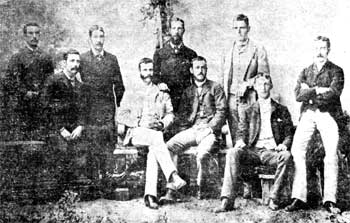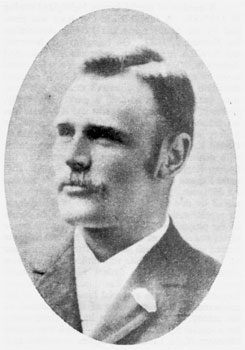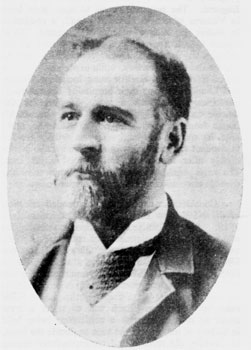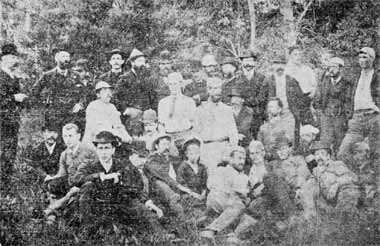
Sydney Rows
A Centennial History of the Sydney Rowing Club, 1970, by A L May
Table of Contents
Chapters
- Preliminaries: before 1870
- Foundations: 1870-1880
- New Clubs: 1880-1890
- The Amateur Question: 1890-1900
- Sydney on Top: 1900-1910
- Henley and War: 1910-1920
- Pearce and Mosman: 1920-1930
- Financial Problems: 1930-1940
- War and Wood: 1940-1950
- Strength and Stability: 1950-1960
- On Top Again: 1960-1970
Appendices
3. New Clubs: 1880-1890
Sydney continued its domination of events in the 1884/85 season. With Mercantile still absent, Sydney's senior eight won its event at the Association's fifth annual regatta in October, 1884 by 10 lengths from North Shore, while Gerald Kennedy showed promise of things to come by winning the junior sculls by over 20 lengths. St. Ignatius' showed Sydney Grammar the way home in the Mayor's Grand Challenge Cup and Sharland of Tasmania took the Sydney Mail event from Trimble and Thomson. Sydney also won another Gardiner Cup race for senior fours in December, 1884 for the third time, thus qualifying to retain the cup permanently.

A Sydney Rowing Club crew of the early 1880's - J A Brodie is standing in the centre
The 1885 Anniversary Day regatta was also a triumph for the club. Even with Mercantile competing, Sydney took all six events-junior sculls, senior four, senior sculls, maiden four, junior four, and maiden double sculls. Attempts to induce Mercantile to return to the Association continued. The earliest minutes of the NSWRA still in existence are those for November, 1884 and the first business item on those minutes is notice of motion by the chairman, Jim Clark, that that part of the regatta regulations relating to keeping outside all beacons be rescinded.
At the December meeting, this was duly done, but Mercantile failed to return to the fold. When intercolonial selection time came round again, the Association invited all NSW amateur oarsmen, whether belonging to clubs or not, to submit their names for selection. A squad of twelve was nominated but three Mercantile members withdrew their names.
The 1885 intercolonial race was of special significance: Tasmania and Queensland were to be represented for the first time. The NSWRA accepted their entries and no objection was forthcoming from Victoria. Tasmania had given indications of wishing to compete in the 1883 race, but 1885 was the first occasion on which Queensland had shown interest. A request had been received from South Australia soon after a rowing association was formed in that colony in 1881 - but for an entry which would include manual labourers. They were told they were most welcome with a crew of bona fide amateurs but, as this would have ruled out many of their best oarsmen, South Australia declined to compete.

Ted Kennedy
The NSW crew in 1885 contained six Sydney men - Bros, Ted Kennedy; Brodie, Simpson, Moppett and Johnson, with Jim Oatley coach once again. Victoria led early but was caught and passed by NSW, the winning margin being 1 1/2 lengths. Tasmania was 2 lengths behind Victoria and Queensland was 3 lengths further back. One note of interest was the use by Tasmania of a "fin", the first time it had been used on an eight. All boats in the race were built in Melbourne by either Fuller or Edwards.
Two more important developments occurred in 1885. In June, the first St. Ignatius' College Regatta was held and over 2000 people attended. Jim Clark of Sydney was prominent in the arranging and Mercantile members also assisted. There were two races for clubs, the senior double sculls which Mercantile won and the maiden four in which Glebe was successful. The first intraschool races were conducted while Sydney Grammar took the interschool race.
In August, Mercantile finally rejoined the RA, its request for readmission being unanimously approved. For the Association's regatta in October, Mercantile entered a senior eight but pulled out, leaving Sydney with another rowover. Sharland was the only entry in the senior sculls and he too rowed over the course.
There were twelve rowing races at the Balmain Regatta (together with eight sailing races) and oarsmen were called on to wear coloured guernseys in races, because many of them took their coloured caps off before racing and crews could not be told apart. Sydney and Mercantile fouled in the senior fours, allowing Balmain to take this race for the first time. In the senior sculls, Middleton and Brett fouled at the start and Sharland stopped rowing, allowing Thomson to score another win. Brett took the Laidley Sculls at the National Regatta, however, while a Mercantile four, including Brett, easily won the senior fours from Sydney and Balmain.
Selection of the 1886 intercolonial crew was left to the captains of the associated clubs and selection of the coach to the crew itself. Included in the final crew were Bros, Ted Kennedy, Brodie and Johnson and Brett of Mercantile. A suggestion from the VRA that Brett might not be a bona fide amateur (presumably due to a series of challenge races with a Victorian sculler) was dismissed by the NSWRA and the matter lapsed. Brett, in fact, was selected by the crew as their coach.
On other occasions, a boat had been specially ordered for the NSW eight and hired from the builder for the one event only for the sum of £ 35. On this occasion, Fuller, of Melbourne, built a boat for the Association for a purchase price of £ 70. For the record, the boat was 57' long, 25" beam amidships, 121/a" deep amidships, 63/a" forward and 6 1/4" aft. The seats were on rollers and swivel rowlocks were used. Oars were 12' long with a 7" blade and were buttoned at 44". Victoria and NSW were the only two starters for the ninth intercolonial eights, and Victoria ran out the winners by several lengths. This took Victoria's record of wins to six against three for NSW.

Gerald Kennedy
The 1886/87 rowing season was relatively unexciting. The 1886 Association regatta saw Sydney successful in three of the four club events - the Kennedy brothers, Gerald and Ted, taking the senior pair, the senior eight beating Balmain by several lengths and the junior four rowing over. Woolloomooloo Bay won the maiden fours and Sydney Grammar beat St. Ignatius' in the all schools' event.
Sydney's regatta was still closed to other clubs, while Mercantile had one open event at its regatta, but received no entries for it. A new top sculler appeared on the scene in 1886: Connolly of North Shore won the Sydney Mail Cup in October and the Laidley Sculls in January. Sydney's four of Johnson, the two Kennedys and Dobson took the senior four, while Balmain Working Men's Rowing Club was prominent in races for manual labour amateurs.
A three-man committee of Bros, Myers and Albert Goodyear (Balmain) was given the task of selecting the 1887 intercolonial crew. Four Sydney members gained selection - Bros, Johnson and Ted and Gerald Kennedy - with two oarsmen from Balmain and two from Mercantile making up the number. Ted Kennedy was described in one report as "the most powerful man in the boat", while "for pluck, endurance and power", Bros was said to have few equals. Of Hellings, the Sydney coxswain selected, it was written that "as a rule, he keeps a straight course. More than this is not expected of him".
Indications that Tasmania would compete proved abortive. There was minor drama regarding the Victorian crew: the NSWRA objected to the selection of W. G. Leverett, a registered bookmaker, charging that he was not, therefore, a bona fide amateur. The VRA decided he was eligible to row, but further problems were resolved when Leverett resigned from the crew.
Under John Myers' coaching, great things were expected of the NSW crew: they were in "splendid condition" and "for vigour and dash and genuine oarsmanship it would be hard to best it". Nevertheless, it was bested-by 4 1/2 lengths, although Gerald Kennedy crabbing and another man losing his slide failed to help their performance.
A number of special factors highlighted rowing in 1887/88. A Jubilee Eight Oar Race was planned by the South Australian Rowing Association for November, 1887. On being invited, however, the NSWRA replied that, under the SA rules and definitions, NSW could not send a crew. SA countered by suggesting a race under the NSW amateur definition and the RA answered that, in this case, they would attempt to send a crew. Eventually, however, no NSW crew was sent and it appears that no intercolonial race took place.
In regattas in Sydney in the first part of the 1887/88 season, Gerald Kennedy confirmed his promise as a sculler with good wins in the senior scull events at the Sydney Regatta, the North Shore Regatta, the Balmain Regatta and the Rowing Association's regatta. At the latter, "the Sydney Rowing Club ably maintained its title as the premier club of the colony, its representatives winning all the available events on the programme".
The effort in taking the senior eights was even more commendable because the crew figured in a bad smash in which two oarsmen came off their seats, one blade was broken and the crew almost swamped. East Sydney finished 2 lengths away second and Glebe was third.
The National Regatta of 1888 was a special function, part of the celebrations of the centenary of the foundation of the colony. ₤800 was given by the Government for a special aquatic celebration. Clark was elected chairman of the Centennial Regatta committee and, naturally, it set to work enthusiastically. Of the amount put up, ₤250 was offered for a champion yacht race and £100 for club fours in string-test gigs, open to all clubs in all colonies.
The rowing events finally attracted entries from 245 oarsmen, although none were attracted from other colonies. In the major event, the senior fours, Sydney finished first and second, the crew of Johnson, the Kennedys and Dobson winning easily. In the junior fours, Sydney was 6 lengths clear but swamped near the flagship. Mercantile won the maiden fours and the remaining event, the Laidley Sculls in wager boats, was won by G. J. Ruwald of the Manly Club, Kennedy not starting.
Selectors of the 1888 intercolonial crew were called upon to resign. The three were Bros, Oatley and Myers and, when their squad of oarsmen was submitted to the Association meeting, the names of many prominent oarsmen - including Johnson and the Kennedys - had been missing.
The difficulties were, eventually, overcome and the crew selected included Johnson, F. J. Payne, Brodie, the Kennedys and Dobson (stroke) of Sydney. Bros had initially been selected as stroke but he came under criticism from the Association regarding his duties as its treasurer and appears to have resigned from the crew. He was later asked to resign the treasurership for neglect of his duties. Jim Clark accompanied the crew to Melbourne as coach where it was hailed as the best seen from NSW and started favourite.
The event was closely contested until Dobson crabbed and the crew stopped rowing. Victoria drew away and finally won by 4 lengths. The bona fides of some members of the Victorian crew were later queried by NSW and the VRA was asked to give an assurance as to their eligibility. Victoria replied that, while two members were saddlers, they were eligible under Victorian rules.
Two interesting developments were pending at this time. In mid-1887 NSW had suggested that the intercotonial race be changed from April/May to November, but time had prevented introduction of the change that year.
It was, however, introduced in 1888, with two intercolonials being held that year. The second scheme was much more exciting: it was proposed to send a combined Australian crew to England. The proposal seems to have been born in Victoria where, in February, 1887, a resolution in favour of such a scheme was passed.
NSW agreed to call a meeting of delegates from all the colonies at the time of the intercolonial race to discuss the matter further, while invitations were received from several English clubs, including Thames and London, offering their hospitality if an Australian crew made such a visit. Support for the scheme came quickly from Jim Clark who, on his return from England, said he felt Australia could hold its own in England. It was finally decided to conduct selection trials in fours and sculls immediately after the second intercolonial eights race. The trials would be open to representatives of the rowing associations of all Australasian colonies.
Considerable controversy surrounded selection of the NSW crew for the second intercolonial of 1888. Albert Goodyear had been nominated as selector but his appointment was not at all popular, and most leading oarsmen, including all those from SRC, declined to make themselves available.
Meantime, Victoria and NSW had recommenced the debate on the amateur question, with Victoria claiming they could not get a crew together under NSW rules by November. Each was to select a crew under its own rules, with a conference being held in Sydney at the time of the race to decide the issue.
Meanwhile, old records and correspondence setting out the agreement reached between them were searched for everywhere. Goodyear finally managed to get a crew together but it was quite an effort. He finished with four men from Balmain, one from University, one from Mercantile and two from St. Ignatius' College (he had coached crews from both Balmain and St. Ignatius'). His crew turned in a plucky performance in the event, but was beaten by some 6 lengths by the Victorian crew.
At a later function, specific disapproving reference was made by the chairman to the boycotting of the crew by Sydney. It may also have been some consolation for Goodyear to hear Upward describe his Victorian eight as the strongest ever to row for Victoria and perhaps the best ever in Australia.
The special trial races were duly held. Selection of the NSW four was also left to Goodyear and was drawn from his eight. Entries came from Victoria, Tasmania and even New Zealand. Victoria ran out the winners, with Canterbury Rowing Club (New Zealand) second, NSW third and the Tamar Club (Tasmania) fourth. The margins were 2 lengths and 3 lengths.

A group of members at the opening of the tennis court
In the sculling event, Gerald Kennedy won by 5 lengths from Thomson and Connolly. Interest in the tour to England did not, however, last long. NSW remained keen and suggested, in December, 1888, that the VRA and the NSWRA each nominate five oarsmen to form a crew and two emergencies, along with a coach and cox. They even hinted that nomination of Upward as coach would get their approval. Victoria felt other colonies should also be invited to nominate representatives, while NSW appointed a sub-committee to consider the best means of proceeding. The VRA held a public meeting to raise funds in February, 1889, but attendance was so disappointing that the VRA abandoned the Australian eight proposal and NSW decided to proceed no further on its own account.
The conference regarding the amateur definition was also duly held. Four colonies were present, NSW being represented by P. H. Sullivan and John Blackman. After a long discussion, it was decided to recommend the following to the various rowing associations:
"That, in the opinion of this conference, it is desirable that all future intercolonial races
shall be open to all amateurs, i.e. —
1st. Anyone who has never entered for a race advertised as for watermen.
2nd. Anyone who has never competed in any open competition, or for a stake, money, or entrance fee.
3rd. Anyone who has never earned, or partially earned, his living by rowing, or has taken money directly
or indirectly in recognition of his skill in rowing.
4th. Anyone who has never taught, practiced, or assisted in athletic exercises of any kind, as a means
of gaining a livelihood or pecuniary benefit.
5th. Anyone who has not been employed in or about boats for money or wages.
6th. Anyone who has never competed in a match in connection with which a wager or bet is recognised."
There was at least one very important implication. Manual labourers as such would no longer be outside the definition of "amateur" unless they worked in or about boats - if the suggestion was approved. Victoria, SA, Tasmania and Queensland adopted the new definition but there was strong pressure against doing so in NSW. In the latter colony, the matter finally came up for decision at a special conference of rowing club delegates in April, 1889. A motion to adopt the new definition (put forward by a Glebe delegate) was soundly rejected and an amendment, by Warren of Sydney, that the present definition be adhered to, was carried almost unanimously. Vigorous debate and argument marked the meeting.
